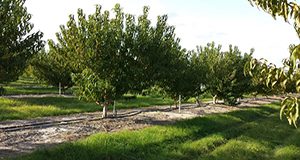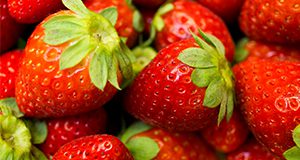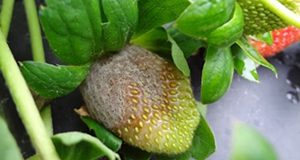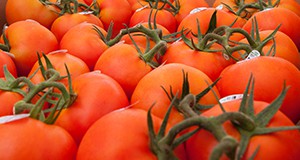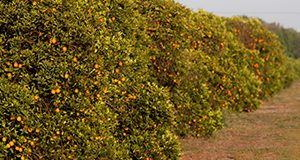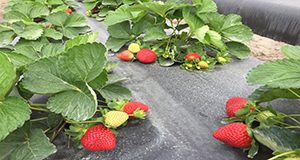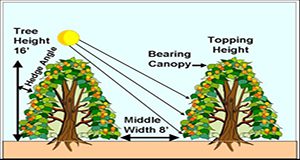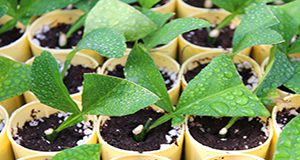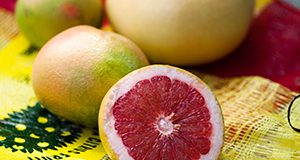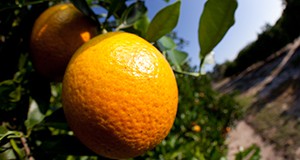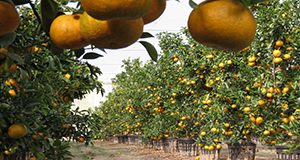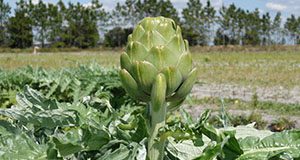This 6-page document provides basic information and guidelines on water requirements and irrigation strategies for peaches grown in Florida. Written by C. Zambrano-Vaca, L. Zotarelli, K. Migliaccio, R. Beeson Jr., K. Morgan, J. Chaparro, and M. Olmstead and published by the UF/IFAS Horticultural Sciences Department, April 2018.
http://edis.ifas.ufl.edu/hs1316
Tag: Horticultural Sciences Department
CRISPR Gene Editing in Strawberry
Because cultivated strawberries are genetically complex, conventional breeding of strawberry can be difficult. Therefore, gene editing can be useful when developing strawberry varieties. This 3-page document discusses CRISPR gene editing in strawberry. Written by Seonghee Lee, Cheolmin Yoo, Kevin Folta, and Vance M. Whitaker and published by the UF/IFAS Horticultural Sciences Department, February 2018.
http://edis.ifas.ufl.edu/hs1315
Botrytis Fruit Rot or Gray Mold of Strawberry
Botrytis fruit rot (BFR), also known as gray mold, is caused by the fungus Botrytis cinerea and is one of the most important diseases of strawberry in Florida and worldwide. This 4-page document describes the symptoms and management of BFR among strawberry plants. Written by J. C. Mertely, M. S. Oliveira, and N. A. Peres and published by the UF/IFAS Department of Plant Pathology, February 2018.
http://edis.ifas.ufl.edu/pp152
CRISPR: A Technical Breakthrough for Tomato Research
CRISPR is a contemporary biological technology that has attracted the interest of both the science community and the general public. This 4-page article discusses why tomato researchers are interested in CRISPR, what tomato traits have been targeted by CRISPR, and potential applications of CRISPR for tomato genetics and breeding. Written by Tong Geon Lee and published by the UF/IFAS Department of Horticultural Sciences, February 2018.
http://edis.ifas.ufl.edu/hs1314
Citrus Production Guide: Plant Growth Regulators
Plant growth regulators (PGRs) are a tool used to manipulate vegetative and reproductive growth, flowering, and fruit growth and development. PGRs have been successfully used in agriculture for decades to amend plant growth characteristics to maximize yield and grower profit. This new 4-page fact sheet discusses auxins, gibberellins, cytokinins, abscisic acid, ethylene, new classes of plant hormones, use of PGRs for HLB-affected trees, and general considerations for PGR use in Florida citrus groves. Written by Tripti Vashisth, Chris Oswalt, Mongi Zekri, Fernando Alferez, and Jamie D. Burrow, and published by the UF/IFAS Horticultural Sciences Department, February 2018.
http://edis.ifas.ufl.edu/hs1310
Health Benefits of Pumpkin Seed and Nutrition Profile of 35 Pumpkin Accessions
Pumpkin seed is high in oil, protein, and total unsaturated fatty acids and is a popular ingredient in snacks and other foods sold across the country. This 5-page article will discuss the health benefits, production, processing, and nutritional profile of pumpkin seed. Written by Geoffrey Meru, Yuqing Fu, Dayana Leyva, Paul Sarnoski, and Yavuz Yagiz and published by the UF/IFAS Horticultural Sciences Department, November 2017.
http://edis.ifas.ufl.edu/hs1312
'Florida Beauty' Strawberry
‘Florida Beauty’ is a new strawberry cultivar released by the University of Florida and commercialized in 2017. This 4-page document describes the characteristics, performance, growth, and management of this cultivar. Written by Vance M. Whitaker, Natalia A. Peres, and Shinsuke Agehara and published by the UF/IFAS Horticultural Sciences Department, November 2017.
http://edis.ifas.ufl.edu/hs1307
Canopy Management of Citrus Trees
Tree canopy and bearing volume are two important factors in fruit production and fruit quality; generally, trees with larger canopy volumes produce more fruit than smaller-canopy trees. Therefore, canopy management is an important aspect of citrus production in Florida to avoid problems associated with overcrowding and excessively tall trees. This three-page document describes canopy management practices for citrus growers. Written by Tripti Vashisth, Mongi Zekri, and Fernando Alferez and published by the UF/IFAS Horticultural Sciences Department, October 2017.
http://edis.ifas.ufl.edu/hs1303
Citrus Propagation
Plant propagation is the art and science of reproducing plants while preserving their unique characteristics from one generation to the next. This 6-page document, written by Ute Albrecht, Mongi Zekri, and Jeffrey Williamson, describes the propagation process for commercial citrus. Published by the UF/IFAS Horticultural Sciences Department, October 2017.
http://edis.ifas.ufl.edu/hs1309
Citrus Production Guide: Rootstock and Scion Selection
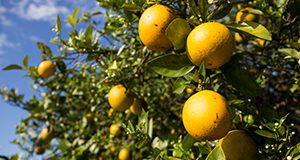 When preparing for replanting, an important factor to consider is the choice of rootstock. Choosing the right rootstock and scion combination can result in higher economic returns without any additional cost. Rootstocks affect scion vigor, yield, fruit size, juice quality, and pest tolerance. However, tree growth, yield, and fruit quality interact strongly with climate, soil type, tree spacing, and other factors, often producing contradictory reports on rootstock performance in different areas. This 3-page fact sheet discusses soil characteristics, rootstock effects on pests and diseases, tree spacing and size, and rootstock/scion combination. Written by Ute Albrecht, Fernando Alferez, and Mongi Zekri, and published by the UF/IFAS Department of Horticultural Sciences, September 2017.
When preparing for replanting, an important factor to consider is the choice of rootstock. Choosing the right rootstock and scion combination can result in higher economic returns without any additional cost. Rootstocks affect scion vigor, yield, fruit size, juice quality, and pest tolerance. However, tree growth, yield, and fruit quality interact strongly with climate, soil type, tree spacing, and other factors, often producing contradictory reports on rootstock performance in different areas. This 3-page fact sheet discusses soil characteristics, rootstock effects on pests and diseases, tree spacing and size, and rootstock/scion combination. Written by Ute Albrecht, Fernando Alferez, and Mongi Zekri, and published by the UF/IFAS Department of Horticultural Sciences, September 2017.
http://edis.ifas.ufl.edu/hs1308
2017-2018 Florida Citrus Production Guide: Fresh Fruit Pesticide Residue Limits
Current citrus production practices often include the use of various chemicals, many of which are pesticides. Chemical residues on the fruit after harvest are a concern to regulators and the public alike because of their potential negative health effects. Therefore, the US and other countries set maximum residue limits (MRLs) on fresh produce for various chemicals. This five-page document is part of the 2017-2018 Florida Citrus Production Guide and discusses the MRLs for various chemicals used on Florida citrus. Written by Mark Ritenour and published by UF’s Horticultural Sciences Department, October 2017.
http://edis.ifas.ufl.edu/hs1301
Fertigation for Citrus Trees
Microirrigation is an important component of citrus production systems in Florida. For citrus trees, microirrigation is more desirable than other irrigation methods for several reasons: water conservation, fertilizer management efficiency, and freeze protection. Research has shown that when microirrigation systems are properly managed, water savings can amount to as much as 80% compared with subirrigation and 50% compared with overhead sprinkler irrigation. Research has also shown the important advantage of microsprinklers for freeze protection of citrus. This 4-page fact sheet discusses fertilizer solubility and some common fertigation materials. It also offers a fertigation summary. Written by Mongi Zekri, Arnold Schumann, Tripti Vashisth, Davie Kadyampakeni, Kelly Morgan, Brian Boman, and Tom Obreza, and published by the UF Horticultural Sciences Department, September 2017.
http://edis.ifas.ufl.edu/hs1306
Grove Planning and Establishment
Many factors need to be considered when preparing for new tree plantings. Careful planning and preparation is necessary to ensure success and reduce future frustrations. This three-page document describes the factors that contribute to the success of new grove establishment. Written by Mongi Zekri, Ute Albrecht, Christopher Vincent, and Tripti Vashisth and published by UF’s Horticultural Sciences Department, September 2017.
http://edis.ifas.ufl.edu/hs1302
Citrus Under Protective Screen (CUPS) Production Systems
Citrus can be grown under protective screen structures for fresh fruit production in order to completely exclude the Asian citrus psyllid and therefore huanglongbing disease (HLB, citrus greening). The benefits of eliminating HLB are immediate and include rapid, normal tree growth, higher yields of quality fruit, negligible fruit drop, and uncomplicated fertilizer and irrigation requirements. Because CUPS is a relatively new citrus production system with new challenges, current guidelines are preliminary and undergoing constant refinement through research. This summary of concepts, progress, and tentative recommendations from the first three years of CUPS research in Florida written by A. W. Schumann, A. Singerman, A. L. Wright, and R. S. Ferrarezi and published by the Horticultural Sciences Department was condensed from a comprehensive CUPS Quick Start Guide that will be published and updated on the UF/IFAS EDIS website.
http://edis.ifas.ufl.edu/hs1304
Eight New Potato Variety Trials Spotlights
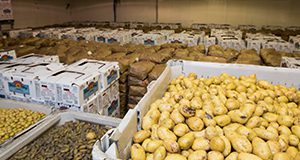
The following eight new potato variety trials spotlights explain the results of the trials and describe the different cultivars. They are published by the Horticultural Sciences Department.
-
HS1293 University of Florida Potato Variety Trials Spotlight: ‘Adirondack Blue’ by Rodrick Z. Mwatuwa, Christian T. Christensen, Pam Solano, and Lincoln Zotarelli
http://edis.ifas.ufl.edu/hs1293 -
HS1294 University of Florida Potato Variety Trials Spotlight: ‘Fabula’ by Rodrick Z. Mwatuwa, Chrsitian T. Christensen, Pam Solano, and Lincoln Zotarellia
http://edis.ifas.ufl.edu/hs1294 -
HS1295 University of Florida Potato Variety Trials Spotlight: ‘Peter Wilcox’ by Rodrick Z. Mwatuwa, Christian T. Christensen, Pam Solano, Kathleen G. Haynes, and Lincoln Zotarelli
http://edis.ifas.ufl.edu/hs1295 -
HS1296 University of Florida Potato Variety Trials Spotlight: ‘Yukon Gold’ by Rodrick Z. Mwatuwa, Christian T. Christensen, Pam Solano, and Lincoln Zotarelli
http://edis.ifas.ufl.edu/hs1296 -
HS1297 University of Florida Potato Variety Trials Spotlight: ‘LaChipper’ by Rodrick Z. Mwatuwa, Christian T. Christensen, Pam Solano, and Lincoln Zotarelli
http://edis.ifas.ufl.edu/hs1297 -
HS1298 University of Florida Potato Variety Trials Spotlight: ‘Harley Blackwell’ by Rodrick Z. Mwatuwa, Christian T. Christensen, Pam Solano, Kathleen G. Haynes, and Lincoln Zotarelli
http://edis.ifas.ufl.edu/hs1298 - HS1299 University of Florida Potato Variety Trial Spotlight: ‘Goldrush’ by Rodrick Z. Mwatuwa, Christian T. Christensen, Pam Solano, and Lincoln Zotarelli http://edis.ifas.ufl.edu/hs1299
-
HS1300 University of Florida Potato Variety Trials Spotlight: ‘French Fingerling’ by Rodrick Z. Mwatuwa, Christian T. Christensen, Pam Solano, and Lincoln Zotarelli
http://edis.ifas.ufl.edu/hs1300
Managing the Health and Productivity of HLB-Affected Groves
After years of extensive research from across the world, we still do not have a cure for HLB; however, we have learned a lot about this disease, the plant’s response to the disease, and the disease vector. Based on scientific and observational information gathered in the last decade, a number of tools and strategies are currently available for growers to maintain the health and productivity of HLB-affected trees. This four-page fact sheet will shed light on these currently available horticultural inputs and practices that can be implemented immediately by growers to maintain and improve citrus tree health.Written by Tripti Vashisth and published by the Horticultural Sciences Department.
http://edis.ifas.ufl.edu/hs1288
Citrus Nutrition Management Practices
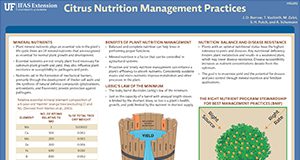
A new two-page fact sheet has been published by the Horticultural Sciences Department and the UF/IFAS Citrus Research and Education Center about citrus nutrition management practices. It was written by J.D. Burrow, T. Vashisth, M. Zekri, S.H. Futch, and A. Schumann.
http://edis.ifas.ufl.edu/hs1292
Production Guidelines for Globe Artichoke in Florida
Globe artichoke (Cynara cardunculus L.) belongs to a genus of thistle-like plants in the sunflower (Asteracae) family and is cultivated for its flower buds. This four-page fact sheet discusses production guidelines for artichoke in Florida. Written by Shinsuke Agehara and published by the Horticultural Sciences Department.
http://edis.ifas.ufl.edu/hs1289
DNA, Technology, and Florida Strawberries
Are Florida strawberries genetically engineered? The answer is no. No genetically engineered strawberry has been commercialized anywhere in the world. The UF/IFAS strawberry breeding program has been developing strawberry varieties for nearly 70 years, but these varieties are developed using a conventional breeding process of crossing and selection. This three-page fact sheet describes that process in greater detail. Written by Seonghee Lee, Young-Hee Noh, Sujeet Verma, and Vance M. Whitaker and published by the Horticultural Sciences Department.
http://edis.ifas.ufl.edu/hs1287
Also see the UF/IFAS press release (12/14): UF/IFAS scientists: Commercially grown strawberries are not genetically engineered
University of Florida Potato Variety Spotlight: Snowden
This five-page fact sheet describes a new University of Florida potato variety named Snowden. ‘Snowden’ is a potato variety that is commonly grown for the potato chip market. It was named and released in 1990 from the University of Wisconsin’s Lelah Starks Potato Breeding Farm in Rhinelander, WI. Tuber production and quality results provided in this spotlight are summarized from various variety trials conducted by the University of Florida’s Hastings Agricultural and Extension Center from 1998 to 2015. Written by Rodrick Z. Mwatuwa, Christian T. Christensen, and Lincoln Zotarelli and published by the Horticultural Sciences Department.
http://edis.ifas.ufl.edu/hs1286
